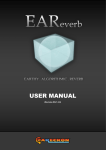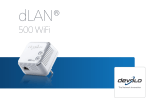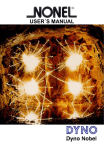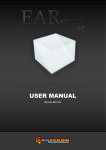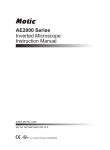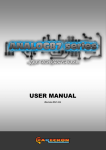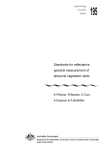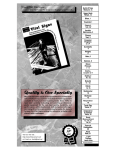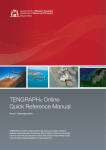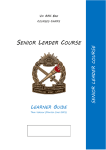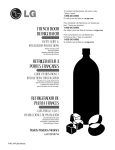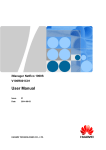Download Orica BlastPED ST User Manual
Transcript
Blast PED ST ® Owner Manual Sydney: Mine Site Technologies Pty Limited PO Box 156 Artarmon NSW 1570 Australia Tel: 02-9437 4399 Fax: 02-9437 5688 Email: [email protected] Web: www.minesite.com.au Mt Isa: Mine Site Technologies Pty Limited PO Box 2436 Mt Isa QLD 4825 Australia Tel: 07-4749 4922 Fax: 07-4749 4933 Email: [email protected] Kalgoorlie: Mine Site Technologies Pty Limited PO Box 4200 Kalgoorlie WA 6430 Australia Tel: 08-9022 2300 Fax: 08-9022 2311 Email: [email protected] BlastPED® ST Owner Manual CONTENTS 1. OVERVIEW 2. SPECIFICATION 3 3. SAFETY 3.1 Access Restriction 3.2 Addressing 3.3 Remote Initiator Hardware 5 5 5 5 4. SYSTEM OPERATION 4.1 Remote 4.2 Controller 4.3 System with Two Remotes 4.4 Use with a Repeater 7 7 7 8 8 5. SECURITY 5.1 Unit Number 5.2 PIN Number 5.3 Number Change Process 10 10 10 10 6. SYSTEM EXCHANGE 6.1 Service Return 11 11 7. ON SITE 7.1 Testing 7.2 Carriage on Site 7.3 Site Set Up 7.4 What to Do, IF? 11 11 13 14 14 8. CARE 8.1 Battery Charging 8.2 Service and Battery Changing 8.3 Storage 15 15 15 15 9. OPERATION SCHEMATIC 16 \\Syd2\manuals\BlastPED\BlastPED ST\Owners Doc Rev 7_A.2.doc Page 3 Page 2 of 17 1. OVERVIEW The BlastPED ST System (also known as BlastPED EXEL) has been developed for use in open cut mines to provide an alternative to safety fuse and cablebased firing systems. The System consists of a Controller and either one or two Remote initiators (see Operation Schematic in Section 9). The BlastPED ST System allows remote blasting using a radio-based link between shot firer and blast site. The difference between BlastPED ST and other versions of BlastPED is that Remote/s are used to directly initiate signal tube rather than initiate electric detonators. BlastPED ST has been designed with safety as the main criteria. The system has several levels of security, but authorised personnel will find it straight forward and simple to operate. 2. SPECIFICATION Each BlastPED ST System comprises: • • • Controller One or two Remotes (radio operated signal tube Initiators) Battery charger for each Controller and Remote. Both Controller and Remotes are portable and battery powered. The two-way radio link between the Controller and the Remote is automatically maintained by the BlastPED ST System through Spread Spectrum radio transceivers internal to the units. The Controller and Remote transceivers are operating at a power output of up to 1 Watt in the band of 900 MHz, and do not require licensing. Maximum operating distance between the Controller and a Remote depends on local terrain and extends to 4 kilometers under Line-of-Sight conditions. Construction of the system is suited to purpose with both the Remote and Controller being rugged in design. The Remote is designed to withstand high pressure as imposed by blast concussion and is water resistant, chemical resistant and able to withstand general neglect. \\Syd2\manuals\BlastPED\BlastPED ST\Owners Doc Rev 7_A.2.doc Page 3 of 17 Nylon 6/6 conditioned tubing is machined to form the main body and battery housing, whilst in later manufacture polyethelyne one piece mouldings are used for the main body. Delrin (Acetal Sheet) is machined from solid to form the Battery Cap, and the Bulkhead for the Nylon bodied units. The Face is machined from clear Acrylic sheet, which was chosen for clarity, strength and scratch resistance. All have very high tensile strength and resistance to a large range of chemicals, whilst their dielectric and surface resistivity capabilities are suited to purpose. Neoprene rubber "O" ring seals are fitted to the Battery Cap, Bulkhead, Face and Battery contacts so as to ensure compliance with IP66. All face fittings are to IP66 and are gasketed and sealed accordingly. The Controller utilises a proprietary housing in the form of a "Pelican" #1450 water resistant suitcase style enclosure built to IP 67 standard. The controller face fittings comply with IP65. Materials used in the construction of the Controller housing are polypropylene whilst the face membrane is polyurethane, both of which offer excellent chemical and wear resistance. A neoprene rubber “O” ring is used to seal the face to the housing. Housing Material Size Operating Temp Range Weight Battery Battery Charger Access controlled by Controller Rated IP 65 Polypropylene 410mm L x 336mm W x 178mm H 0oC to +70oC Remote Initiator Rated IP 66 Nylon 6/6 or Polyethylene 4.2 kg (Inc Battery) Type: NiMH 12V, 2700mAh Not removable by user 4.5 kg (Inc Battery) Type: NiMH 12V, 2700mAh Removable 240V-12V DC Key and Controller 240V-12V DC Key and PIN Spark Plug \\Syd2\manuals\BlastPED\BlastPED ST\Owners Doc Rev 7_A.2.doc N:141mm Dia x 497mm H P:180 mm Dia x 500 mm H 0oC to +70oC 3mm Standard Tube Optional : 4mm Page 4 of 17 3. SAFETY The System has numerous levels of both “Hard” and “Soft” security, as outlined below. 3.1 Access Restriction Access to the Controller is restricted by a safety switch key (common to all BlastPED ST units) and a four digit “PIN” entered via the keyboard. Access to the Remote is restricted by a safety key and Controller “PIN” There are two PINs • • Owner PIN User PIN The PIN numbers are programmed into the Controller on two levels of privilege as outlined below: Level Privilege Owner PIN Operate both remote units. Allows change of User PIN. Operates both Remote units. User PIN 3.2 Addressing Using System Numbers Each BlastPED ST System has the following five (5) System Numbers assigned and controlled by MST: • • • • • 3.3 Radio Network Number. Radio Local Address for Remote Modem No. 1. Radio Local Address for Remote Modem No. 2. ID of Remote Initiator No. 1 ID of Remote Initiator No. 2. Remote Initiator Hardware Signal tube is initiated by a spark plug mounted on the face of the Remote unit. 12 V input to the High Voltage Converter is the source of energy needed to make a spark. \\Syd2\manuals\BlastPED\BlastPED ST\Owners Doc Rev 7_A.2.doc Page 5 of 17 During blasting the firing capacitor is charged by the Converter, and when 3000V is reached a secondary spark gap is breached between the firing capacitor and the spark plug. This increases the critical voltage on the capacitor to 5200 V and thus prevents inadvertent spark by any remnant charge on the capacitor. Bleeding resistors are placed across the firing capacitor to remove remnant charge and prevent charge build up. High Voltage Converter Control Entities No. 1 Hardware Timer 1 2 Timer 2 3 Timer 3 4 Counter 5 Comparator 6 Latch 7 Microprocessor Function Disables blasting for a selected time period following turning the Remote Safety Switch ON. Disables blasting after a selected time period following turning the Remote Safety Switch ON. Disables blasting but for the time period during arming. Controls levels of security negotiated in the process. Normally reset to zero. Incremented to 2 when arming. Incremented to 6 when blasting. Validates the process of going through subsequent levels of security. Locks out the Remote if breach of security detected. Receives, validates and executes commands from the Controller. Notes: ♦ Timers 1and 2 are set by manually changing jumpers on the Remote PCB. ♦ Arming (and subsequent Blasting) is enabled only in the “Blasting Window”, that is from time as set on Timer 1, to time as set on Timer 2 (from turning the Remote Safety Key ON). ♦ Blasting is enabled only in the “Firing Window”, that is for time as set on Timer 3 (15 seconds) after Arming. Timer settings & Pin Numbers for a particular system are printed on a label which can be found in the lid of the Controller unit. \\Syd2\manuals\BlastPED\BlastPED ST\Owners Doc Rev 7_A.2.doc Page 6 of 17 4. SYSTEM OPERATION 4.1 Remote Use the Remote as per the instructions printed on the body, and as indicated below. OPERATING INSTRUCTIONS Note: Tests should be completed in the workshop before each blast to confirm Battery and Communication Status. 1. Shotfirer to remove key from BlastPED Controller before setting up BlastPED Remote. 2. Check BlastPED Remote key is in SAFE position. Note: When inserting the key, ensure the small lug on the rubber key handle cover, points towards the ‘SAFE’ position. 3. When setting up ensure that the Remote is in a location such as to prevent damage from the blast and is also in Line-of-Sight of the proposed Controller location. 4. Switch on Remote. 5. Check that “ON” LED is illuminated. 6. Thread Signal tube through handle. 7. Insert Signal Tube into sparker. Make sure that tube is fully inserted and secured against any wind. Fit Rain Cap if necessary. 8. Proceed to proposed Controller location and set up by following instructions on Controller (see following Section 4.2). AFTER BLAST 9. Turn BlastPED Controller Key to SAFE after blast 10.Turn BlastPED Remote Key to SAFE after blast. 4.2 Controller Use the Controller as per the instructions printed on the face, and as indicated on following page (8). \\Syd2\manuals\BlastPED\BlastPED ST\Owners Doc Rev 7_A.2.doc Page 7 of 17 OPERATING INSTRUCTIONS 1. Raise Antenna (Check that antenna is "firm" in housing. Adjust if necessary) 2. Turn ON 3. Enter “PIN" Enter # Optional: Enter REPEATER number (3 or 4) Enter Remote number ERROR light ON. WAIT light ON. 4. ARM. When READY light ON 5. BLAST. When ARMED light ON (within 15 seconds of ARM) Completed Cycle Return Controller and Remote to SAFE before commencing another cycle. BLASTED light ON. SAFE light ON. 4.3 Return to SAFE Wait Systems with Two (2) Remote Initiators Only one unit can be used at a time. Remote 1 has to have BLASTED and returned to SAFE after which the complete Controller Instructions are again followed. NOTE: Select Remote 2 after entering PIN or the unit will not work 4.4 Systems requiring a REPEATER (Optional) A Repeater is used when an obstruction, or distance interferes with direct communication between Controller and Remote.Set the Repeater at the selected position making sure that both Remote and Controller are in "Line of Sight" of the Repeater. Follow instructions listed on front panel of the Repeater, and make sure that the unit is switched ON before leaving the site. (Fig 1) NOTE: Be sure connect 2 x antennas as supplied on the Repeater, or separate antenna system. \\Syd2\manuals\BlastPED\BlastPED ST\Owners Doc Rev 7_A.2.doc Page 8 of 17 Fig 1. The Repeater provides a “Transparent” link between Controller and Remote via two radios, that, whilst hard wired, will only talk to their allotted partner. The Controller talks to the Slave and the Master talks to the Remote. The Repeater is passive unless a network link is established with the BlastPED Controller. As soon as the Repeater is dialled by the Controller, it powers the Repeater Master Radio which links to the Remote. When the Controller goes off the network the link is broken and the Repeater Master Radio is shut down. Thus the Controller can dial up any Remote either directly or through Repeater No.3 or through Repeater No. 4. All four devices: (two Remotes and two Repeaters) can be switched on all the time, but networks and links will be established by the Controller on demand only. PIN number sequences are as follows: PIN#1 to dial direct to Remote 1 PIN#2 to dial direct to Remote 2 PIN#31 to dial Remote 1 through Repeater 3 PIN#41 to dial Remote 1 through Repeater 4 PIN#32 to dial Remote 2 through Repeater 3 PIN#42 to dial Remote 2 through Repeater 4 \\Syd2\manuals\BlastPED\BlastPED ST\Owners Doc Rev 7_A.2.doc Page 9 of 17 5. SECURITY 5.1 Unit Number Relates to the System number, which is attached on a decal affixed to the face of the Controller, and on the decal on the lid of the Controller. The Remote system number includes the Unit number shown as 1.1, and where two Remotes constitute a system the numbers will be shown as 1.1 and 1.2. These numbers are engraved on a plaque affixed to the left lower face of each Remote. 5.2 PIN Number PIN numbers are used to ensure SECURITY of USE and are protected and changed in the same way as a credit card PIN. The user has an allocated number. The Owner has a selectable number. The Distributor has a selectable number as for the Owner. The User is unable to program a new number The Owner is able to program a new user number 5.3 Number Entry and Change Process Step 1 2 3 4 5 6 (Owner) Action Enter Owner PIN Enter # # Enter new User PIN Enter # Re Enter new User PIN. Enter # (Both Remote indicator lights will blink signifying acceptance of New PIN number.) \\Syd2\manuals\BlastPED\BlastPED ST\Owners Doc Rev 7_A.2.doc Page 10 of 17 6. SYSTEM EXCHANGE MST policy is: “All BlastPED units manufactured by MST are Not User Serviceable” BlastPED ST is no exception. Indeed, it is most important that no party, other than MST service personnel, or accredited service representatives repair the system. Since safety and reliability of the product has been the subject of exhaustive Risk Analysis by MST, we require that the process maintain integrity by disallowing interference by any other party. To achieve compliance with the policy an exchange program is available to the user. 6.1 Service Return When the Owner or Distributor returns a system to MST for service, they must advise where it came from and which system number replaced it, so as to obtain the allocated Owner PIN for the replacement system. 7. ON SITE The BlastPED ST System is an instrument and should be treated as such. Arrangements should be made to store the system in an appropriate place when not in use and when on charge. A secure clean dry storage area is best where charging can take place without interference from other activities. Only authorised trained personnel should have access to the equipment so as to ensure its correct charging procedure and that it is clean and ready or use. 7.1 Testing Two tests are available to the user before use, being: • Test sequence (1) indicated on the Controller • A full functional test (2) as per the operating instructions also indicated on the Controller. \\Syd2\manuals\BlastPED\BlastPED ST\Owners Doc Rev 7_A.2.doc Page 11 of 17 NOTE 1: Before beginning either test place the controller at least five metres from the Remote and in Line-of-Site of each other. NOTE 2: Mine Site Technologies recommends that the BlastPED ST be serviced every 12 months, or after 1000 shots. . 1. Condition Test 1. 2. 3. 4. Turn on the Remote Turn on the Controller Enter User, or Owner PIN # and Remote number Wait until all three (3) test lights on the Controller flash, and then Press TEST Three blue lights will light-up indicating ♦ Controller Battery Condition OK ♦ Communication OK ♦ Remote Battery Condition OK 2. Functional Test Follow Operating Instructions The System can be fired without Signal Tube but should a short piece (100mm) be required, install as per manufacturer’s instructions. SAFETY GLASSES MUST BE WORN during test 2. And no personnel should be in the immediate vicinity. 3. Self-Test (Integrity Test) BlastPED ST Self-Test checks the internal Remote electronics. In particular it tests the state of the Remote unit’s protective circuitry upon which safety relies. The test may take up to 2.5 hours to complete, depending upon the setting of the internal timers of the Remote Unit. To test the integrity of the BlastPED ST Remote unit internal electronics, perform the following: 1. Connect both the BlastPED ST Remote and BlastPED ST Controller to their respective chargers. (Position the Remote unit and the Controller at least 2 to 3 meters apart, otherwise the RF stages of the radios can be overloaded and cause signal distortion) \\Syd2\manuals\BlastPED\BlastPED ST\Owners Doc Rev 7_A.2.doc Page 12 of 17 2. Connect the Chargers together using the supplied cable. Supplied Cable 3. Put power on to both Chargers. 4. Switch on the Remote Unit. 5. When switching on the Controller, either hold button “1” (for Remote 1) or button “2” (for Remote 2) pressed while turning the power key switch. That is, holding “1” or “2” performs test to Remote unit “1” or “2” respectively. 6. The “Test in progress” is indicated by the three blue TEST LED’s flashing in sequence. (Controller Battery OK LED, Communication OK LED, and the BlastPED Battery OK LED) 7. On the Controller, while the three blue TEST LED’s are flashing, the “Remote State” LED’s indicate the progress of the Test sequence. They will change from WAIT to READY to ARMED to READY to ARMED and finally SAFE. If the test completes correctly, the three blue TEST LED’s will be on steady with the SAFE LED. If the Test Sequence fails, the ERROR LED will flash with a certain pattern (number of quick flashes), followed by a short pause (about 2 seconds). The number of flashes gives an indication of the reason for the test failure. Please contact Mine Site Technologies for assistance. NOTE: The Integrity Test is an independent test and does not co-exist with charging. The use of the chargers (and associated interconnecting lead) is merely to enable the Integrity test to be performed. To properly charge the units (controller and remote), the units must be in the SAFE mode (off). If after performing the integrity test and wishing to ensure the batteries are fully charged: 1. Return units to safe - \\Syd2\manuals\BlastPED\BlastPED ST\Owners Doc Rev 7_A.2.doc Page 13 of 17 2. Disconnect from charger 3. Re-connect to charger - 7.2 Carriage on Site Transport of the system to site should be done with care that would normally be attributed to an instrument. The Remote/Remotes should be restrained so as not to roll around and the Controller also. Since the units are to be protected from rain etc they will most probably be carried within a vehicle and preferably on the floor. However, should the User/Owner wish to carry the units in the back of a ute retainers such as fire extinguisher brackets can be used for the Remotes and an occy strap for the Controller. 7.3 Site Setup The selected site for setting up the Remote/Remotes should take into account the following: ♦ ♦ ♦ ♦ ♦ ♦ ♦ ♦ ♦ ♦ ♦ ♦ ♦ Suitable distance from blast. Effect of blast on Remote – Air Blast – Flyrock etc Flat level surface for the Remote to stand. Line-of-Sight from proposed Controller firing site. Remote Antenna should not be obstructed by the handle, from Lineof-Sight of the Controller antenna. Follow the instructions on the Remote. DO NOT FIT SIGNAL TUBE UNTIL THE REMOTE IS SWITCHED ON. Exit the site with care and proceed to Controller site. Controller site should be selected so as to provide Line-of-Sight of Remote when firing. Care should be taken with selection of site so as to prevent accidents occurring due to the terrain. Follow the instructions printed on the face of the Controller. When the blast is completed and the Controller indicates BLASTED and SAFE the Remote should be retrieved and inspected for damage. Return all units to storage and place on charge. \\Syd2\manuals\BlastPED\BlastPED ST\Owners Doc Rev 7_A.2.doc Page 14 of 17 7.4 What to Do “IF” MISFIRE. If BLASTED and SAFE ON, Check Spark Plug. If READY on, Retry ARM and BLAST. ERROR on. Incorrect Input COMMS FAIL on. Remote battery flat. Remote not switched ON. Switch to SAFE and back ON. Retry. Not in Line-of-Sight. Other Interference. Switch to SAFE and back ON. Retry. If continued failure, Return to store. COMMS FAIL light blinking intermittently means that communication may be weak, but not ineffective. Information will still be relayed between the Remote and Controller. The “Blasting Window” time span preset by MST to suit the Mines procedures, and pre set between T1 and T2 will be sufficient to allow the User to switch Controller to SAFE and back ON, and try again. Should the “Window” expire the Remote will have to be reset and the sequence re started. 8. CARE Whilst the System units are robust and designed with harsh conditions in mind care should be taken not treat them in an irresponsible manner. Keep them clean and free from any toxic substance by wiping over with a moist cloth wetted with water and a light detergent. 8.1 Battery Charging Make sure the Remote and Controller units are switched to SAFE. Plug the respective charging leads into the units, making sure that the receptacles are free from moisture and foreign particles. Do not force. Make sure the keyways are aligned. Put power on to the chargers \\Syd2\manuals\BlastPED\BlastPED ST\Owners Doc Rev 7_A.2.doc Page 15 of 17 The charge light will glow continuously until such time the battery is charged after which, the ready light will glow. Should the charger be left on continuously the On light will glow and the Ready light will pulse until the charge plug is inserted into the unit, at which time the Charging light will glow. 8.2 Servicing and Battery Changing The System and batteries are not User Serviceable 8.3 Storage The System can be stored indefinitely. Make sure that all units are switched to SAFE and they are housed in a clean dry place. Care should be taken that no remnants of toxic chemicals remain on the housings. Before reusing units they should be fully charged and tested as described in Section 7.1 \\Syd2\manuals\BlastPED\BlastPED ST\Owners Doc Rev 7_A.2.doc Page 16 of 17 \\Syd2\manuals\BlastPED\BlastPED ST\Owners Doc Rev 7_A.2.doc Page 17 of 17 The unit is battery powered and fully self contained. Displays Remote Receiver status at all stages of the blasting cycle. A Key & a PIN Code give access to send secure, specially coded ARM & BLAST commands to the Remote Receiver. Controller Signaling is two-way, Controller to Remote and Remote to Controller. Spread Spectrum radios are used for safety, and are license free. Two-way Radio Signals The unit is battery powered and fully self contained, and provides feed back on its status to the Controller. Receives and executes commands sent from the Controller unit. On receipt of valid BLAST command, internal capacitors are fast charged, then discharged into the signal tube spark plug. The signal tube/shock tube then initiates the blast as normal. Remote Receiver Initiator 9. BlastPED ST – Operation Schematic

















